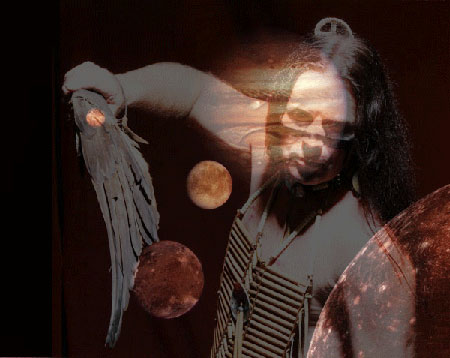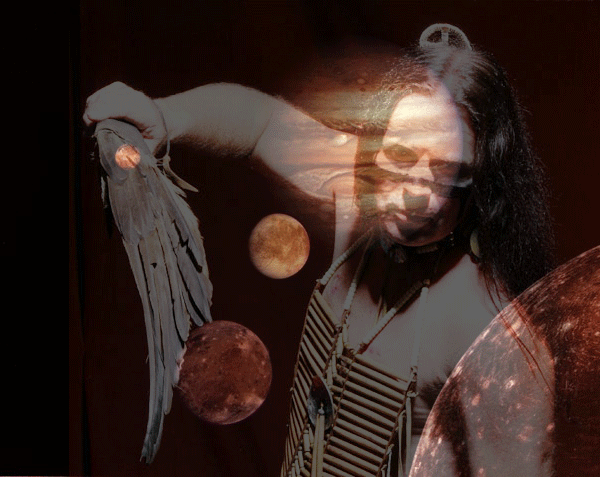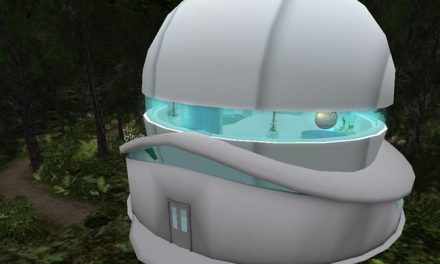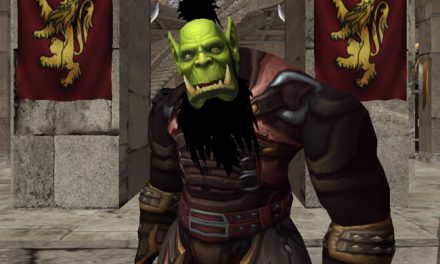 What Meets the Eye
What Meets the Eye
by
Andy Ballantine
“I’m sorry, really I am. It just has to be this way. I love you both very much. Gloos, take care of your sister and Marten, you listen to your big brother.”
The children said nothing and their mother drove off toward the freeway, leaving them to fend for themselves.
“I guess she’s really gone, Marten, we’d better see what we need to do.” Gloos – short for Glooskap – was a pragmatic 12-year-old boy, not prone to being too sentimental. Even at the sight of his mother leaving him and his 9-year-old sister alone.
“Why did she leave us? Why did she leave us alone, Gloos? Did we do something wrong?” Though her brother was a pain, much of the time, Marten still looked to him for strength and comfort on rare occasions.
“You know she’s only going to work, Marten. It’s nothing we did—she just needs to go. She can’t be taking care of us all the time, like she said. We have to take care of ourselves, today.”
“I’m only 9! You’re only 12, that’s not old enough to be left alone! We’re just kids, how are we supposed to take care of ourselves?”
“Oh come on, Marten, you’ve been to school before. We’ll manage fine. Let’s go.”
Suddenly, the bell calling children to their first day of school for the year rang out.
Head low, Marten faced the difficult future while Gloos just shook his head at how his sister sometimes made everything so dramatic.
Within the first few minutes of class both children had found good reason to look forward to this school year. The school had received extra funding this year from a big, new software maker and would be adding virtual reality for use in some lessons.
Soon, the two were walking together in an immense desert, heading for some nearby mesas. The hot August sun made the children sweat and seemed to sap their strength, making them stumble slightly. Only a very mild breeze brought any kind of relief.
In the distance were some low mesas that Gloos wanted them to aim for. He felt that if they could climb one of the table-top rock formations, they might see signs of civilization.
“We can’t climb that, Gloos. It’s too tall!” Marten complained as they finally reached one of the formations. Her feet were already a little sore from walking and the rock seemed very tall to her.
“We can climb that, I guarantee it, Marten. I bet it’s easier than it looks.”
This close, they could see that it wasn’t all flat and smooth surfaces, but a huge collection of bumps and holes leading as far up as they could see. Even Marten started to believe she could climb that.
She always was a good climber.
At the beginning, the climb was easy. Many handholds and places to put their feet dotted the rise and they were soon 100 feet up the side.
“See, Marten, the top isn’t really that high. We’re almost halfway there.”
“I’m getting tired, though, Gloos. And we are so high! What happens if we fall?”
“I don’t know, but I don’t think we should do that. Just don’t look down and you’ll be fine.”
“No—help me. I don’t want to fall!” Marten refused to move any further and Gloos could see that she couldn’t keep holding on forever.
“I’m coming to help, Marten. Just stay still.” As he said this, he used the many purchases to move a few meters to the right and used his body to cover his little sister. “I’ve got you, you’re safe now. Can you help out a little, though? I can’t carry you up, so you will have to keep climbing. I’ll keep you from falling.
“But what do we do when we reach the top? Shouldn’t we go down instead? If we go up, we still need to come back down and it would be farther from the top.”
“Well, duh. Don’t worry, though. We need to get to the top so we can see if there is anywhere we can go to get out of this place. You didn’t see anything down there, did you? Height will help us. We’ll find some way down I’m sure of it.”
“Okay, Gloos. I’ll try. What do I do?”
“Just climb. I’ll climb just below you so I can catch you if you slip and so I can help you place a foot or help you to lift yourself if you have too much trouble. Go ahead.
Slowly, the two continued their climb. Once or twice Marten did need some help in placing her foot into a good foothold, but they managed to get to the top in another 20 minutes and finally stood at the top looking out over the wide open landscape.
“Isn’t this pretty, Marten? I’ve never been in a desert and I always thought it would be horrible, but this is really very nice.”
“Yes, it is. Look at how big the sky seems! And it’s so blue with pretty little fuzzy clouds. Ooh, I’m afraid to look down!”
“Then don’t look, dummy. Stand in the middle, or lie down and look at the clouds. I’ll look for some sign of life out there while you rest.”
“Okay. Um, Gloos?”
“What is it, Marten?”
“There’s some food up here. Why would there be food up here?”
“That’s silly, Marten. You must be …” But as he looked, he could see his little sister was right. Not only food but plates, napkins and utensils.
“How is this even possible? This can’t be food we can really eat, can it?”
“Why not? Someone left it here—we should eat it.”
“But I don’t know how that would be possible. It can’t be real.”
“Well I’m going to eat it. You do what you want.”
As Gloos watched, Marten picked up a sandwich that looked like peanut butter and started to chew. “Tastes fine to me—if it isn’t real, it sure seems real.”
Almost convinced, Gloos picked up what seemed to be potato chips and took a bite. “Tastes just like my favorite chips! I don’t understand this.”
“Well, take a drink of this water and see if that seems right to you.”
“Tastes just like water. I am impressed. There is nothing in this simulation I’ve seen, felt or tasted that makes me think this isn’t real!”
“Well, there’s that,” said Marten pointing at a small plane at one side of the flat topped hill that certainly hadn’t been there a moment before. “And look! Over there, there’s a fire that looks like some people are sitting around down there a way.”
“Are we supposed to fly this thing? I don’t know anything about flying!”
“Maybe there’s instructions inside.”
Gloos walked over and looked into the cockpit. A small sign in front of two seats said – just get in and enjoy.
“Well, this is interesting. I guess we should do what it says.”
“Will it be dangerous, Gloos? It looks scary.”
“Remember, Marten, this is just a computer program—a very good one, but still not real life. I don’t think they would let us get hurt. They even managed to provide food while we are in a game—they must know what they are doing. Let’s get in.”
After a short, but exhilarating ride, the plane landed itself just next to where the kids could see 5 other people sitting around what was, indeed, a campfire. They got out of the plane and joined the others.
“Welcome children, how do you like the software? I hope you’ve all used your time wisely to understand how the system works. Now we are going to spend some time together, so please, come sit around the fire with us. We can begin soon.
Let me start by introducing all of you to one another—I hope you will all become good friends. The two most recent children are named Glooskap and Marten – I understand Glooskap prefers the name Gloos. This young gentleman is named Albert and seated next to him is a young lady named Denny. To her right is John and next to him is Michelle.”
“Each of you children has had time today to experiment with this new system we’ve recently been given. I’m sure most of you have heard of the term “Virtual Reality” where we are put into a new world or talk about our own world with pictures and sound that feel almost real. All of this is done with a computer and some video systems as well as some more advanced systems that we can talk about at a later time.”
“Today, we will begin using this system to help you to understand some of your heritage by showing you and making you a part of one of the legends of our people. My name is Atian and it is good to meet you all today. We are seven at the fire, an important number, as I will explain.
Let us begin with the legend of the first person.”
As soon as the teacher finished, everything vanished. There was no light, no sound and no substance to feel around them. Then, they once again heard their teacher speak:
“The creator, Kji Niskam, first created the sun, who we call Naku’set to warm the heavens and provide light to the people who would follow. We have, since the beginning, learned more about how life works around us and we know that the sun came into being after other suns had died out—we know the universe is old, but we do not say that this knowledge is a reason to doubt in the creator. We are the people we are not the gods. We know much, but we do not know all.”
As the teacher speaks, the sun appears above them. At first a bare hint of light on the horizon, black becoming blue and blue becoming almost white. At the same time, the children hear a deep noise as of a bass guitar note going on forever.
“With the sun in the sky, the creator knew the people would need a land to walk upon and so he created the world. He created the land upon which our people now live and called it Wsitqamu’k. The creator knew the people would need animals and plants to survive, so those also were made. The creator made the earth as the center with the sun to revolve around, showing how important to the creator were the people.”
Around them, they see a large lake, the sun shining brightly upon it, mountains bordering the shores. Trees grow out of the ground and animals begin roaming the area around them. Once again, they were seated around a fire and a new sound could be heard – the soft beating of a drum.
“Teacher?” Marten asked.
“Please, call me Atian, Marten. What would you like to ask?”
“I thought that the Earth travels around the sun.”
“In truth, it does. This is legend, and may not always show what is today. Legends and myths are stories meant to show how we feel about the universe, so parts may not stand up to today’s knowledge. No myth and no legend should just be accepted as all true, but each story provides us with lessons on how to be better people and how to live our lives well and in harmony with others. When these stories were made, the people did not have the knowledge we hold today. The respect shown to the creator, or the universe, is the same, however, in whatever manner the world actually came into being.”
“So, if the legends aren’t true, why do we still talk about them?” Gloos could not resist asking that question.
“It isn’t that they are not true. They have always been true, but they are not based on what we see, but on what we feel. The legends show our love of creation and help us to understand what all things in creation mean to the people. Let me continue and I hope you will understand what I am telling you.”
“I’m sorry, Atian. I won’t interrupt you again.”
“Don’t be sorry, children. To truly understand what we have been given, you must ask questions. Staying quiet when you don’t understand is the worst thing you can do. I would ask, however, that you hold your questions until I am finished. Perhaps those will be answered for you anyway.”
“The first person created was named Kluskap. Gloos, I believe that is you are named after him—spelling often changes with each person to hearing a name or word.”
“Created from lightning, Kluskap was first given form without movement and without consciousness.”
While the teacher continues, lightning flashes and a human form appears upon the ground close by. A quiet sound seems to have begun as well—was that laughter?
“Another flash and Kluskap is given life. Unable to move, he could still view the world around him. He took note of the animals and the plants and knew them to be good. He could feel their purpose in the world and he learned to respect that purpose.”
The children witnessed a blinding flash and the body seems to stir but remains on the ground. Around the children, animals wander by—moose, caribou, beavers and more walk or run by or simply stand and eat from the grass and trees. Birds of all kinds fly through the air or land and build nests. Time seems to pass quickly and animals give birth and lay down to die from age. The sun set and rose and the clouds floated quickly across the sky, occasionally bringing rain or snow to the land.
“Kluskap begged Kji Niskam to allow him to move so he can be one with the animals and plants around him. Finally, a third flash of lightning and Kluskap is able to move. He stood and circled seven times, giving thanks to the creator for giving him life, thanks to the world for providing him a place to be and thanks to the sun for warmth and power.”
As the instructor speaks, the action is visible to all of the children—the sounds and the feeling of the air around them made possible through this new and advanced technology. They are witnesses to life past and present and they each feel closer to their own world.
“There are seven directions in legend. A direction for the creator, one for the sun, one for the world as well as one each for east, south, north and west. In many of the legends the number seven is used – it appears that seven was a special number and may have meant the same to our ancestors as the term ‘a lot’ means to each of you. The legends talk of seven families traveling, breaking into seven groups when they have reached their destinations, seven sparks of the Great Fire and groups of seven used during ceremonies to represent many different things.”
“When you are older, you may take part in one of these ceremonies. In one ceremony, seven men enter a lodge, each representing one of the original families. They place rocks known as grandfathers in configurations of seven, fourteen and twenty-one. The twenty-one will be heated and the men will pour water on them. The walls of the lodge will be made from seven alders and from seven beech saplings and the walls covered with hides from moose and caribou, or mud, to keep the warmth inside. The men show their spiritual strength by withstanding the heat and thus honor the seven directions.”
“Although you are not adults, you are still strong. You show your strength and commitment to the people and to the seven directions each day. Today I would like you to do a smaller ceremony with me. Around the fire, you will see piles of sweetgrass. Let us each take a handful and place it into the fire. With this, we celebrate Netawasum, nephew of Kluskap. So we don’t eat only the animals, we learned from Netawasum of the creatures of the water, who also help us to live.
The waters of the lake are teeming with fish, some swimming, some jumping into the air, as if in joy. The image of a strong young man joins the image of Kluskap—the two clasp hands and hug.
“Please place another handful of the sweetgrass into the fire and celebrate the grandmother of Kluskap—Nukumi—who came into life to provide wisdom and knowledge. Your offering shows respect for the elderly, for what they have done to make your life today possible.”
“Lastly, children, please give praise to the mother of the first—Ni’kanaptekewi’skw – who came to the world as a leaf and shows us how the world provides not just the animals and the fish, but the plants and nuts. All of the bounty for the people to share—all things that need the help of the people to maintain.”
*******
“In the world today, harmony is fading. The world has felt how the people in it have failed to conserve. The people have started to believe convenience or comfort in the short run is more important than the land or the future children and animals that may live.”
Around the children there are scenes of ice breaking off of huge ice shelves, pollutants streaming from factories and trash floating upon the lake thrown by careless people unwilling to clean up after themselves. Campfires turn into forest fires and cars congest the freeways.
“The world is in trouble from the people, but the people can help the world again. If we do not, there will be no more people to enjoy the world and many of the animals and plants will be gone because we couldn’t be bothered. Don’t let this happen—you are the future and the future depends on you.”
“The legends did not address pollution or climate change, but they often did address greed, which is one of the biggest reasons for how things have gotten to the state they are in now. Kluskap or other figures of legend sometimes used force to win their battles, but more often, they used guile—their intelligence and wit – to fool or teach others what was right. You children can do this, as well. I don’t want you trying to fool anyone, but use your intelligence and your passion to convince others to do what must be done to bring harmony back into this world of ours.”
********
“Today we learned about a creation legend of our people. In the future, we will learn more about science and history and will continue to learn more about our past. We started with this legend because it is good to not only know information that allows you to become smart and useful people who will continue to make the people proud, but so that you can take the things you learn and understand what they mean to all. Knowledge without understanding, without a foundation of knowing what is right and just, leads a civilization to become smaller. The people have always been in harmony with the universe and that harmony will keep us growing forever. Go home tonight and let your family know what you have learned and help them to understand. That is your homework—to always work to improve the world around you and spread love, respect and understanding to all creation.”
“Kluskap swore to return one day, when the people were in danger. The world today is fraught with dangers. The greatest threat today is the lack of harmony humanity has with the Earth and those creatures made to serve us and be served by us. We can hope, and ask Kluskap to return to us – to help us in this time of danger. If we only rely on legend, however, we may be disappointed. Salvation may come to us, but if it does, or if it does not, it is the people who must work the hardest to bring the world back into harmony.”
Gloos took Marten’s hand, each excited to see their mother after their long school day. They had a lot of questions, and now, they had some of the answers, too.
“This story is an adaptation of the creation theory of the Mi’kmaw Culture. The Mi’Kmaw are a First Nations indigenous people of Canada’s Atlantic Province and northeastern Maine.”




